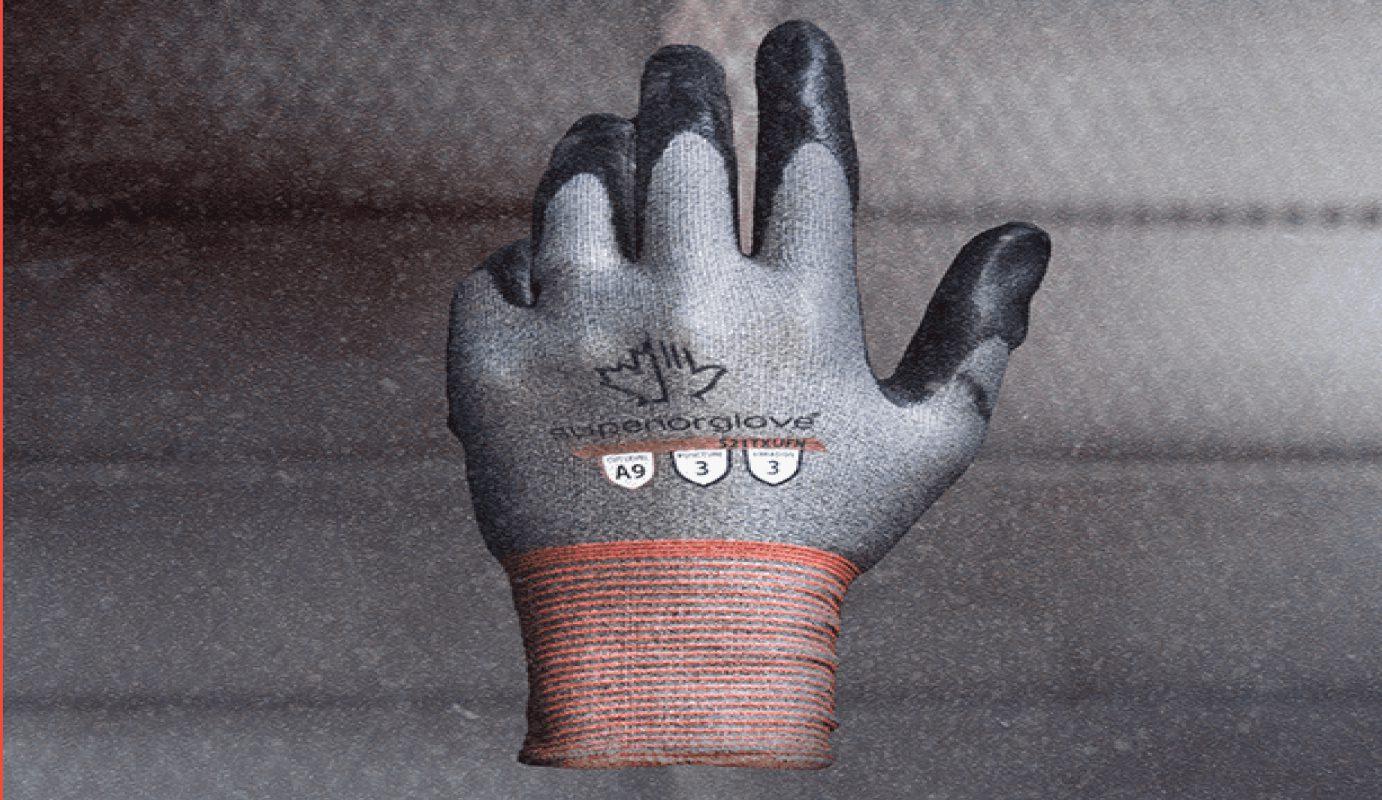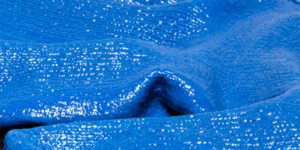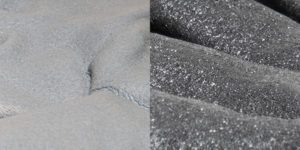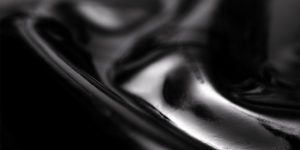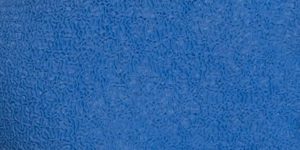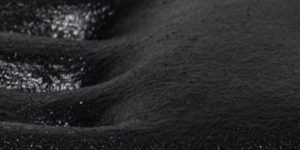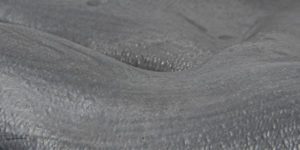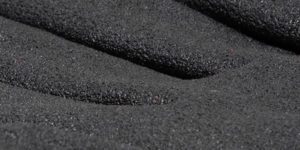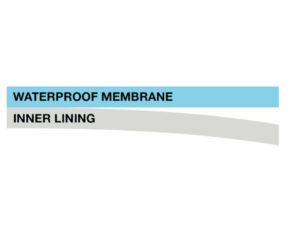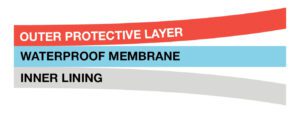
Glove 101
Glove Additives
and Treatments
Additives and treatments are incorporated into safety gloves to complement existing features or add features that may be missing. These can include: Palm Coatings, Glove Linings, and Glove Treatments.
Glove 101
Glove Additives and Treatments
Additives and treatments are incorporated into safety gloves to complement existing features or add features that may be missing. These can include: Palm Coatings, Glove Linings, and Glove Treatments.
Palm Coatings
Palm coatings serve as an additional layer of protection on safety gloves that can be tailored for specific tasks and work conditions. When it comes to mechanical protection, all palm coatings offer some degree of abrasion and puncture resistance (depending on the thickness of the coating). Palm coatings also contribute to improved grip and durability.
We’ve listed below the most popular coating materials with their benefits and limitations to help guide you better.
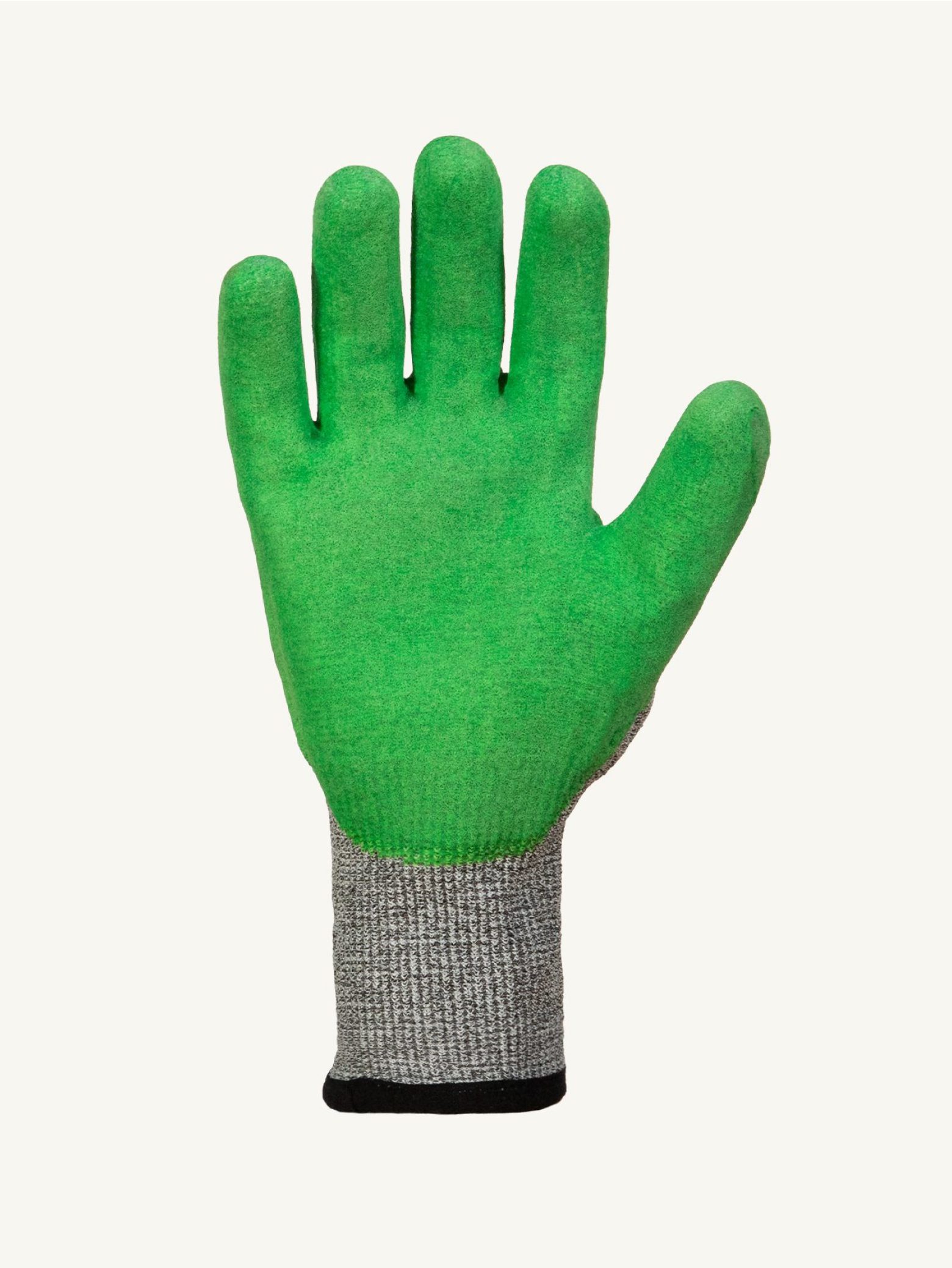
Click below to learn more about each type of palm coating
FLAT
Nitrile is the most versatile palm coating. It offers the best wet/oil grip compared to others. This is especially true with foam and micropore nitrile. It is highly durable, more than PU (Polyurethane) but less than latex. Flat nitrile is also tougher than the porous foam and micropore nitrile.
Limitations
Limited dexterity and stiffen up in cold temperatures.
FOAM
Foam and micropore nitrile are made by introducing air bubbles into the nitrile mixture. This creates a space where liquids can escape to when working with wet or oily surfaces.
Foam and micropore nitrile are very similar, in that they offer excellent wet grip but achieve results differently. While foam nitrile absorbs and disperses liquid in the palm for improved grip, micropore acts like suction cups to enhance grip.
Limitations
Limited dexterity and stiffen up in cold temperatures.
LATEX
Latex is very economical and offers strong dry grip. Because it is a natural rubber, it has a little more stretch to it when compared to nitrile and offers better durability and puncture resistance.
Limitations
Latex does not have very strong wet grip and stiffens up in cold temperatures. It is also very susceptible to natural solvents (organic solvents), so it degrades overtime as it dries out and is prone to cracking.
CRINKLE LATEX
Crinkle latex has a larger surface area on the palm compared to flat latex. This helps improve the grip even more, even wet grip, because gives the water some place to go. As a natural rubber, it is very durable and offers good puncture resistance.
Limitations
Even though crinkle latex helps improve wet grip, it is better for dry grip applications. Crinkle latex also stiffen up in cold temperatures.
NEOPRENE
POLYURETHANE
PU coating offers high level of dexterity and tactility and a good dry grip. PU is the most commonly used material for non-marring gloves.
Limitations
PU coatings are less durable and offer poor wet grip and average dry grip when compared to other coatings. They also stiffen up and crack in cold temperatures.
PVC
SILICONE
Silicone is quite unique. It offers high heat resistance as it has a very high melting point, and good abrasion and puncture resistance. It is also very adhesive resistant.
Limitations
Silicon offers poor wet grip. It also contaminates the surface you’re working on, which affects the quality of finished products.
Glove Liners
Glove liners serve as an additional layer to enhance comfort, warmth, or protection for the wearer, depending on the task and work conditions.
Lining for insulation
When we say glove insulation, we’re essentially talking about preventing the external temperature from interfering with the hand’s temperature—also known as thermal control. And we use different materials to achieve this.
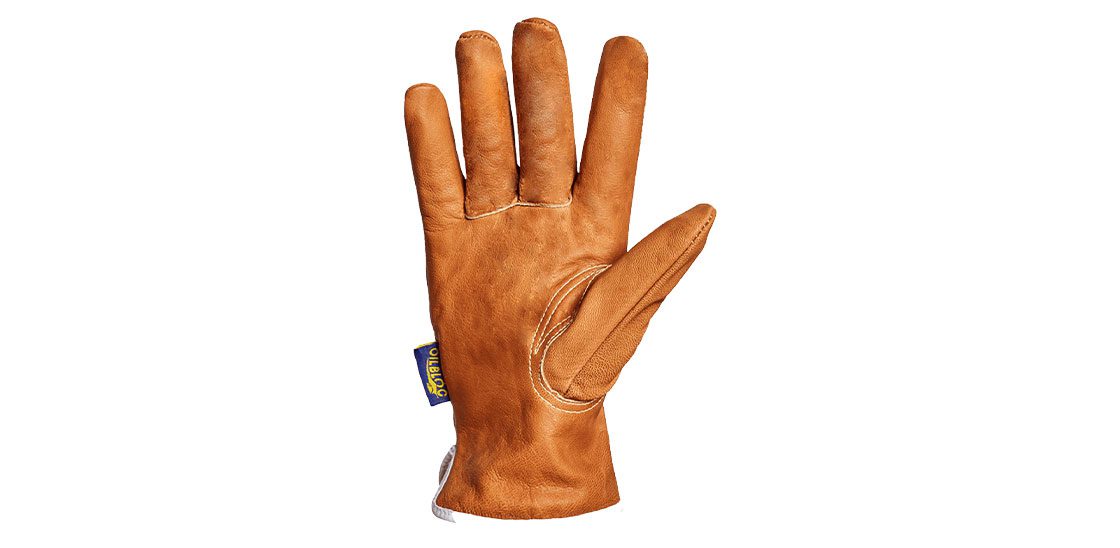
• For gloves meant for shoulder or summer seasons, the lining is made of materials that resist heat i.e., materials resist change in temperatures and prevent the loss of cool air trapped inside the gloves. A good example of this includes gloves lined with para-aramid or meta-aramid (refer to Glove Shell Materials | Knitted Yarns to review the features, attributes, and limitations of these materials).
• For winter gloves, we use materials that allow to trap in as much warm air as possible. And the more air they trap, the warmer the gloves will be. The most common glove liners used to keep workers’ hands warm in the winter seasons include Thinsulate™, Acrylic, or fleece.
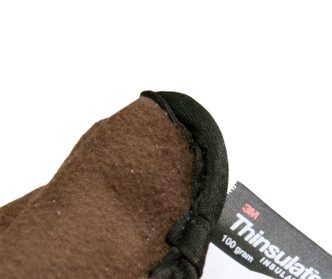
Thinsulate™
Thinsulate™ is a breathable and moisture-resistant insulator that offers optimum warmth in cold environments. It is effective at trapping air and keeping hands warm while allowing moisture to escape. Thinsulate™ liners are better for warmth when compared to fleece, but it is also more costly.
The level of Thinsulate™ used for lining is measured in GSM (grams per square meter). This describes how much insulation is added to the gloves (the thickness of the liner). Generally, 100 GSM is sufficient to keep hands warm without losing on dexterity for most winter temperatures, down to -25°C. 200 GSM lining is used for heavy-duty winter safety gloves, but this also makes the gloves thicker and heavier, so you’re also losing some level of dexterity.
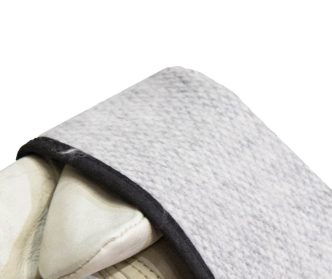
Acrylic or Fleece
Acrylic or fleece liners are a good starting point as the temperatures are just starting to drop. It is one of the most common lightweight options that is warmer than cotton or foam lining and less bulky than other insulations. Gloves with fleece liners can also be sufficient for indoor workspaces that are kept at cooler temperatures.
Lining for Waterproofing
Membrane liners, also known as impermeable liners, are used for waterproofing safety gloves. In this method, a layer of waterproof membrane (plastic base) is inserted into the gloves to create a barrier that prohibits the water drops from passing through. This helps keep the hands comfortable and dry in wet working conditions.
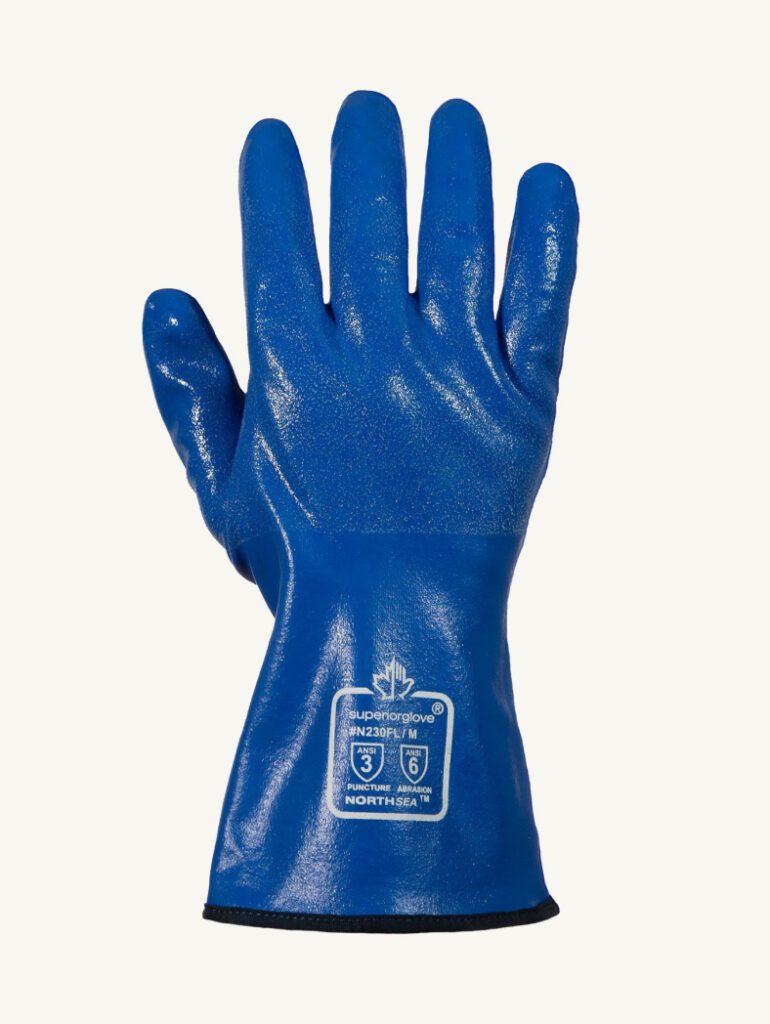
01 DOUBLE-LAYER CONSTRUCTION
One apparent drawback of the double-layer construction method is that if the outer layer is damaged, it compromises the waterproofing of the gloves.
02 TRIPLE-LAYER CONSTRUCTION
A visual representation of the triple-layer construction method can help you understand this better.
For Mechanical Protection, Comfort, and Durability
Liners can also be added (either sewn or inserted) to enhance mechanical protection. For example, leather gloves on their own don’t offer significant protection from cuts or punctures. Leather gloves that offer mechanical protection against cuts and puncture have liners or inserts with these properties added to them.
Similarly, liners can be added into gloves to improve comfort and sense of feel by using materials like cotton and nylon, or for structural support, as is the case in chemical gloves.
Glove Treatments
Glove treatments are a cost-effective way to introduce features in gloves that may otherwise be costly. Some of the most commonly used treatments include:
Oilbloc™ TREATMENT
Oilbloc™ treatment on safety gloves prevents absorption of oils and repels water. This treatment is applied to gloves with leather that have a natural tendency to absorb oils.
At Superior Glove, many of our premium leather gloves are treated with Oilbloc™ which resist water and oil penetration that can degrade the material and present safety issues.

WATERPROOF TREATMENT
Waterproof treatment (different from waterproofing gloves using a membrane lining) is sprayed on and creates a barrier to prevent fibers from soaking up liquids. It can be applied on leather, mechanics, or string knit gloves.
anti-microbial
Anti-microbial treatment inhibits bacterial growth and is used only in string knit gloves. The treatment is washed into the fabric, which means that the material absorbs the chemical during the wash.
pre-washing
Pre-washing is essentially controlled pre-shrinking of string knit gloves to avoid undersized gloves after laundering.
cleanroom processing
Special laundering process in a sanitary environment to remove any contaminants, including lint.
Additional Features to Enhance Glove Performance
There are additional features that can be incorporated into gloves to achieve more specific features
necessary for your work tasks or conditions.
Additional Features to Enhance Glove Performance
Finger Caps
Crush resistant shell inside the tips of the fingers to help resist crushing. However, finger caps reduce the level of dexterity.
TOUCHSCREEN
Powdered carbon is incorporated into the palm coating to make safety gloves touchscreen compatible.
Hight Visibility (Hi-Viz)
Hi-viz shell or retro reflective strips (orange, green, or yellow) to enhance hand placement visibility and measure glove compliance.
NON-MARRING
Marring is the effect of leaving behind residue/markings after touching a product, like fingerprints on a glass. Non-marring gloves are ideal for quality control for finished products.
DOTTED PALMS
Dotted palms help improve grip, but only marginally.
BACK-OF-HAND
Back-of-hand impact protection can be sewn or molded into gloves to protect workers’ hands from injuries. It is rated on a scale of 0-3, with level 3 offering the highest level of impact protection. Thermoplastic rubber (TPR) is the most popular material used for back-of-hand impact protection. Superior Glove and some other manufacturers use a proprietary blend of materials to achieve higher levels.
Electro-Static Dissipative (ESD)
Gloves made with mildly conductive yarn that is able to dissipative electro-static buildup
